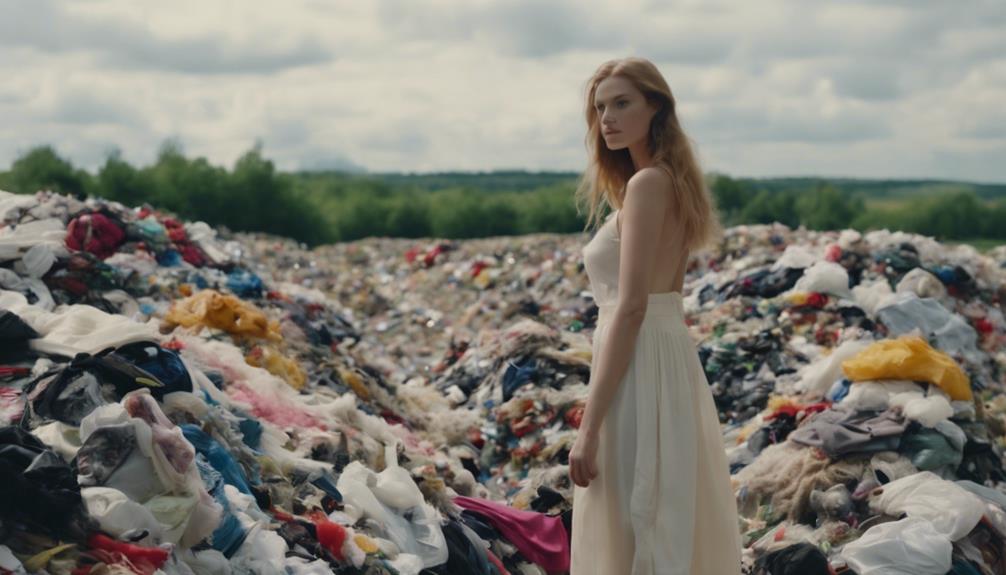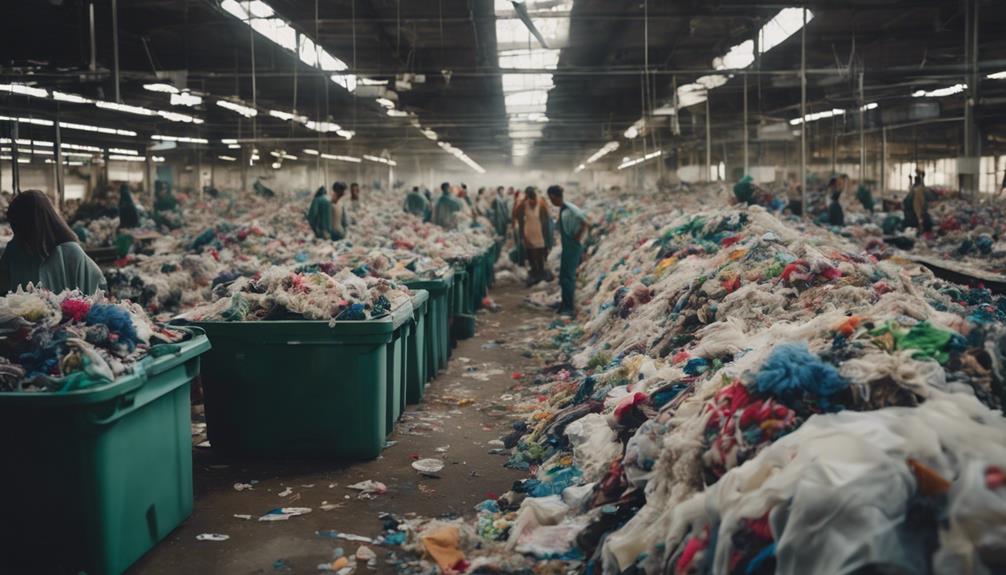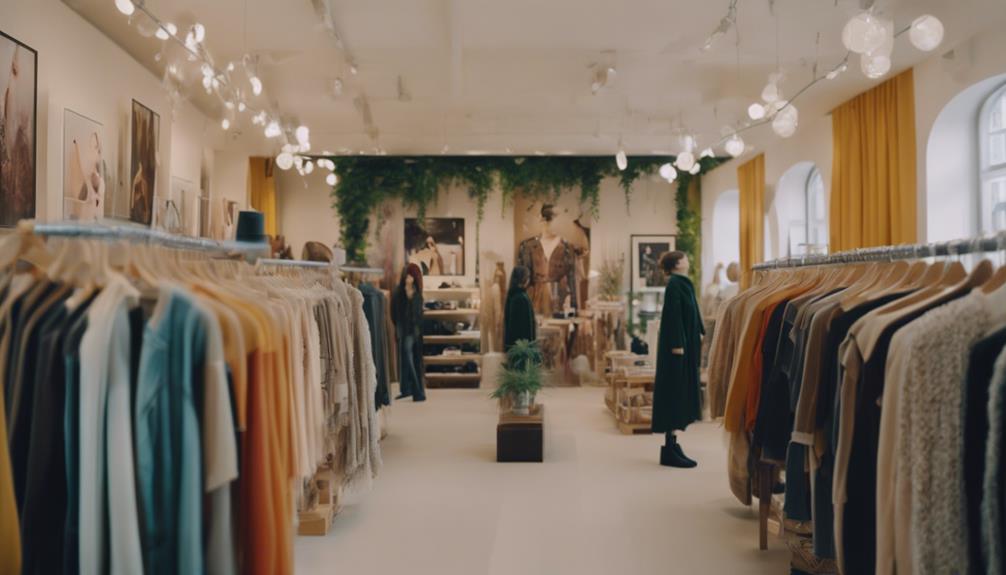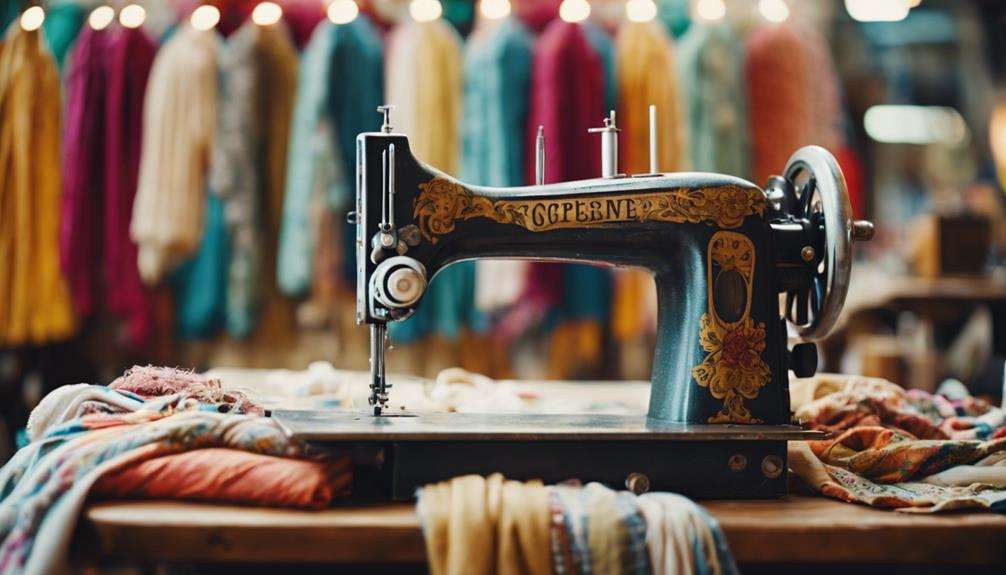Yes, sustainable fashion exists, but it’s more complex than you might think. It focuses on reducing environmental harm and promoting ethical labor practices. You’ll find brands using eco-friendly materials like organic cotton and recycled polyester, but many still fall short of true sustainability. Fast fashion causes immense waste, and the system often overlooks the workers behind the garments. However, there’s hope through consumer demand, ethical brands, and innovations aimed at genuine sustainability. Understanding the full picture of sustainable fashion can open your eyes to both its promise and challenges, leading you to explore even more surprising insights.
Key Takeaways
- Sustainable fashion aims to minimize environmental and social impacts through transparency, eco-friendly materials, and ethical production practices.
- The slow fashion movement contrasts fast fashion by emphasizing quality, durability, and repairability over disposable trends.
- While sustainable initiatives exist, systemic challenges like profit-driven models and exploitative labor practices hinder widespread adoption.
- Consumer demand for sustainable options is crucial but is not matched by adequate investor support or funding for ethical brands.
Understanding Sustainable Fashion
Sustainable fashion focuses on minimizing environmental and social impacts by promoting transparency in production processes and using eco-friendly materials. In today's fashion industry, the staggering amount of textile waste—about 92 million tons annually—highlights the urgent need for change. You'll find that over 60% of clothing produced each year ends up in landfills, making sustainable practices essential.
Embracing sustainable fashion means choosing materials like organic cotton, hemp, and recycled polyester. These eco-friendly materials help reduce the harmful effects associated with conventional textile production, especially the pollution linked to synthetic fibers. You might also want to look for certifications like B-Corporation, Fairtrade, and GOTS. These labels help you identify brands committed to ethical labor practices and environmentally friendly production methods.
Moreover, the slow fashion movement encourages you to value quality over quantity, emphasizing durability and repairability in garment production. This approach stands in stark contrast to the fast fashion model, which prioritizes rapid production cycles that contribute to significant waste and environmental degradation.
The Impact of Fast Fashion

The fast fashion industry directly undermines the principles of sustainable fashion by prioritizing rapid production and disposal, leading to staggering environmental and social consequences. You mightn't realize that fast fashion generates an estimated 92 million tons of textile waste globally each year. Shockingly, 85% of this waste ends up in landfills or is incinerated, considerably contributing to the environmental impact.
Moreover, fast fashion is responsible for 8-10% of global greenhouse gas emissions, ranking it among the largest polluters after oil. The constant churn of clothing trends means garments are often worn just a few times before being discarded, fueling this cycle of waste.
Consumer demand drives these harmful practices, as retailers like SHEIN and Forever 21 release new styles at breakneck speed, encouraging overconsumption. This low-cost model also leads to exploitative labor practices, leaving workers in unsafe conditions and earning mere cents per garment.
While there are sustainable alternatives available, the overwhelming influence of fast fashion continues to challenge sustainability efforts. It's essential to recognize this impact and consider more responsible choices in your wardrobe.
Systemic Challenges in the Industry

You can't ignore the systemic challenges that plague the fashion industry, especially when it comes to ethical production standards.
Many brands prioritize profits over responsible practices, undermining genuine sustainability efforts.
As you explore these issues, consider how profit-driven models impact not just the environment, but also the workers behind the clothes you wear.
Ethical Production Standards
Many brands often prioritize profit over ethical production standards, leading to widespread exploitation in the fashion industry. The rise of fast fashion has dramatically impacted garment workers, resulting in poor wages and unsafe working conditions. In fact, many laborers earn as little as 4 cents per garment, which is a stark reminder of the industry's systemic failures.
Unfortunately, regulatory frameworks lag behind, allowing companies to exploit workers without accountability, while smaller ethical brands struggle to survive.
You might wonder why this matters. The lack of systemic change perpetuates environmental risks, as brands ignore the consequences of their production methods. The COVID-19 pandemic only exacerbated these issues, further depleting resources for those committed to ethical practices. Meanwhile, larger corporations continued to thrive without making necessary adjustments.
If you're seeking a sustainable option, it's essential to support brands that genuinely adhere to ethical production standards. By doing so, you contribute to a demand for better working conditions and fair treatment of garment workers. Your choices can help shift the industry towards a more sustainable and equitable future.
Profit-Driven Business Models
Profit-driven business models in the fashion industry prioritize immediate financial gains, often at the expense of ethical production and environmental sustainability. Fast fashion brands have ramped up garment production since the 2008 recession, leading to declining worker wages and exploitative labor practices. These strategies focus on maximizing profit rather than investing in sustainable fashion initiatives.
In this landscape, direct-to-consumer (D2C) models have shifted risks onto manufacturers, allowing brands to profit while local job markets suffer. Investors typically favor high-profit ventures over sustainable models, making it tough for ethical brands to secure funding and compete effectively.
Despite increasing demand for sustainability, systemic issues like a lack of regulatory frameworks and profit extraction from labor continue to impede genuine progress. The fashion industry often overlooks the importance of environmental responsibility, clinging to practices that prioritize short-term gains.
Until these profit-driven business models evolve to embrace sustainable fashion principles, the industry will struggle to align with the ethical and environmental standards you expect as a conscious consumer. Change is possible, but it requires a collective shift in priorities from profit to responsibility.
Effects of the COVID-19 Pandemic

The COVID-19 pandemic greatly disrupted the fashion industry, highlighting vulnerabilities in sustainable business models and widening existing inequities. Smaller ethical brands faced significant challenges, struggling with resource depletion while larger corporations managed to endure the crisis more effectively.
You might be surprised to learn that many ethical brands experienced severe financial losses due to retail closures and canceled orders.
- Tonlè, Cambodia's first sustainable fashion initiative, reported over $200,000 in order cancellations during the pandemic.
- Production disruptions from 2020 to 2022 created cash flow challenges, as strict lockdowns halted manufacturing for nearly two months.
- Retailers that honored orders provided essential support, helping some ethical brands avoid bankruptcy.
As you can see, the pandemic's effects were profound, revealing how precarious the landscape of sustainable fashion can be. While some brands adapted and innovated, others struggled under the weight of economic uncertainty, reminding us that the path to truly sustainable practices is fraught with obstacles.
Investment Barriers and Consumer Influence

Attracting investment for sustainable fashion initiatives proves tough, as investors often overlook the potential impact of ethical brands in favor of higher returns. This creates significant investment barriers, limiting funding opportunities for the very sustainable initiatives that consumers increasingly desire. While the demand for sustainable fashion grows, investor interest remains insufficient, which stymies progress in the fashion industry.
It's vital to recognize that consumer influence plays a pivotal role in this equation. When you choose to support ethical brands, you send a message that impacts not only the market but also how investors perceive the potential for sustainable practices. Your buying decisions can help sustain small businesses in the ethical fashion sector, which heavily rely on customer engagement for survival.
However, the narrative often wrongfully blames consumers for the lack of sustainable purchasing. The truth is that your demand for sustainable options isn't matched by investor support. To create meaningful change, it's essential for you and your fellow consumers to continue advocating for sustainable practices, thereby encouraging investors to reconsider their priorities and invest in the future of sustainable fashion.
Innovations and Misconceptions

When you explore sustainable fashion, you'll find a mix of exciting innovations and common misconceptions.
Many new materials and practices claim to be eco-friendly, but their actual impact can be misleading.
It's essential to question whether these innovations truly lead to a more sustainable future or if they're just a facade.
Sustainable Innovations Overview
Sustainable innovations in fashion often create confusion, as many strategies marketed as eco-friendly fail to greatly lessen the industry's environmental impact. While recycling models and rental services have gained popularity, they often don't tackle the core issues of textile waste and consumption patterns. Here's a closer look at some key aspects:
- Bio-based materials: These can still contribute to ecological issues if not produced sustainably.
- Rental services: High-profile platforms like Rent-the-Runway struggle to reduce overall waste effectively.
- Consumer behavior: Changes in how you shop are vital for sustainable practices to make a difference.
The fashion industry generates approximately 92 million tons of textile waste annually, highlighting the limited effectiveness of current sustainable practices.
Misconceptions about sustainability often arise from marketing claims, leading you to believe that items labeled as 'carbon positive' or 'organic' are always eco-friendly.
For real change, it's important to look beyond surface-level solutions and consider thorough practices that align with genuine sustainability efforts.
Common Misconceptions Explored
Many people mistakenly believe that innovative approaches in fashion, like rental services and bio-based materials, automatically lead to true sustainability. This misconception oversimplifies the complex issues at play in sustainable fashion. While these innovations aim to reduce the environmental impact of the industry, they often fail to address systemic challenges such as labor exploitation and waste management.
For instance, the introduction of recycling initiatives and market-based solutions hasn't notably shifted the fashion industry's overall trajectory. Many products marketed as 'less unsustainable' still rely on non-biodegradable materials and do little to mitigate environmental degradation. It's essential to recognize that sustainability exists on a spectrum, but this can be misleading.
Simply offering a rental option doesn't resolve the foundational issues of overconsumption or the exploitative practices prevalent in garment production. You need to be discerning about what sustainable fashion truly means. True sustainability requires more than just innovations; it demands a thorough approach that tackles the root causes of harm and changes consumer behavior.
Without addressing these vital elements, the fashion industry's claims of sustainability remain largely superficial.
Pathways to Genuine Sustainability

To achieve genuine sustainability in fashion, the industry must embrace systemic changes that prioritize ethical production and transparency over superficial claims.
You can play a pivotal role by understanding that sustainable fashion requires more than just recycling models; it demands a thorough approach that addresses the root causes of textile waste and environmental impact.
Consider these essential pathways to genuine sustainability:
- Adopt sustainable materials: Shift towards organic and recycled fibers that lessen environmental harm.
- Encourage ethical production: Support brands that prioritize fair labor practices and safe working conditions.
- Educate yourself and others: Become informed about the impacts of your consumer choices to foster a market that drives sustainable practices.
Frequently Asked Questions
Does Sustainable Fashion Really Work?
You might think sustainable fashion works, but it often falls short. While innovations like recycling and rentals exist, they haven't greatly reduced waste. True change requires systemic shifts, not just trendy solutions or marketing claims.
Do People Really Care About Sustainable Fashion?
Caring about sustainable fashion is like planting seeds in a garden; you nurture your values but sometimes forget to weed out old habits. While many consumers express concern, actions often contradict intentions, complicating true sustainability.
Is Sustainable Fashion Overhyped?
You might think sustainable fashion's impact is overstated. While some brands promote eco-friendly practices, many fall short, often prioritizing marketing over real change. It's essential to scrutinize claims and demand accountability in the industry.
What Is Sustainable Fashion and Why Is It Important?
Sustainable fashion's like a refreshing change in a polluted city; it's essential for reducing waste and lowering emissions. By choosing eco-friendly brands, you're not just wearing clothes, you're embracing a better future.
Is Inclusive Sizing Considered in the Definition of Sustainable Fashion?
In today’s fashion industry, the concept of sustainable fashion and inclusive sizing is gaining momentum. Brands are becoming more aware of the need to cater to a diverse range of body types and promote ethical and sustainable practices. Including a broader range of sizes in sustainable fashion collections is an important step towards inclusivity.
Conclusion
To sum up, sustainable fashion's future hangs in the balance, beckoning bold changes.
You can play a pivotal role by prioritizing purpose over popularity, supporting brands that genuinely care.
By choosing consciously crafted clothing, you contribute to a cycle of compassion and creativity.
Remember, every small step counts in this stylish sustainability saga.
So, don't just follow trends—forge a path towards a more mindful wardrobe, and together, let's stitch a brighter, more sustainable tomorrow!









